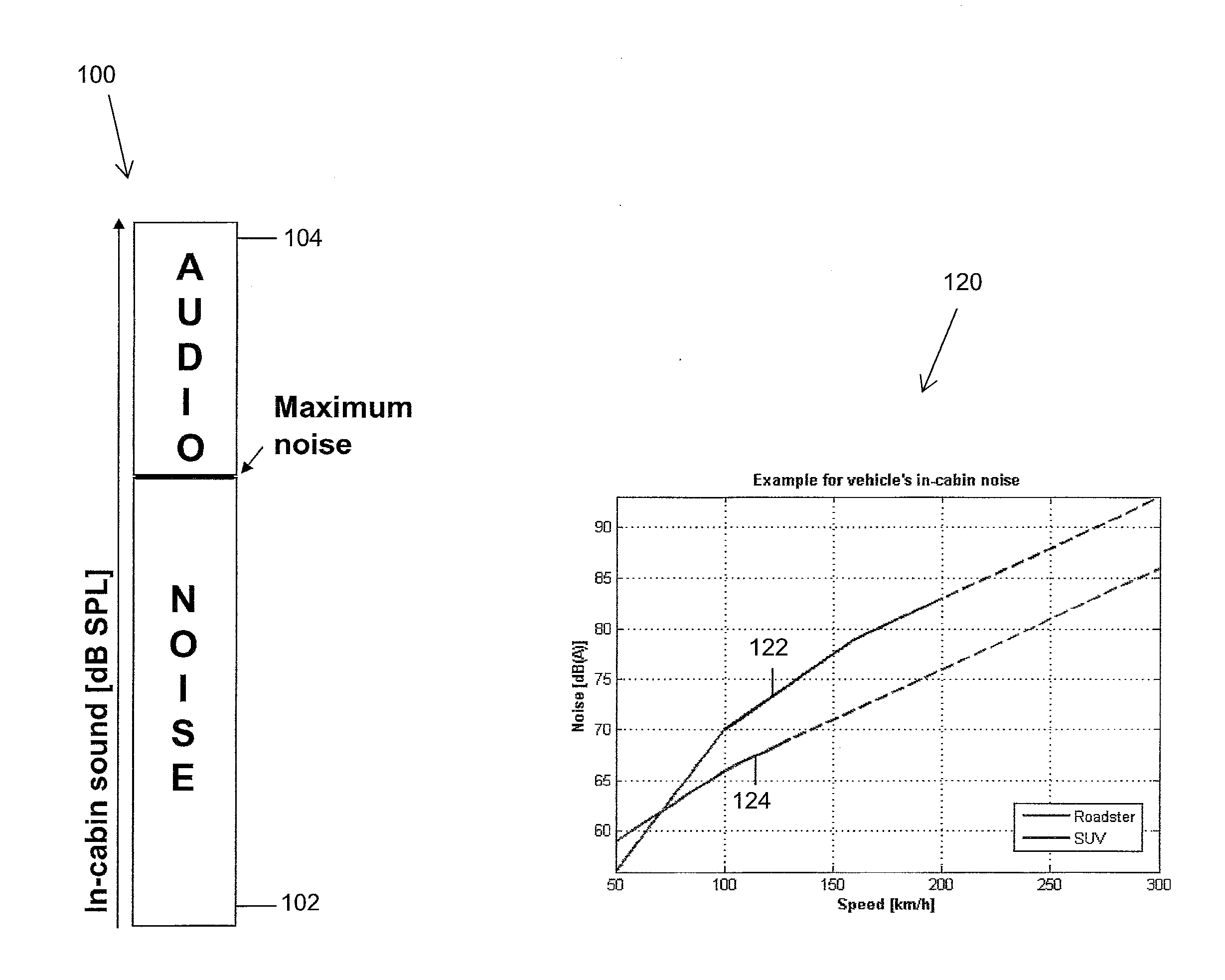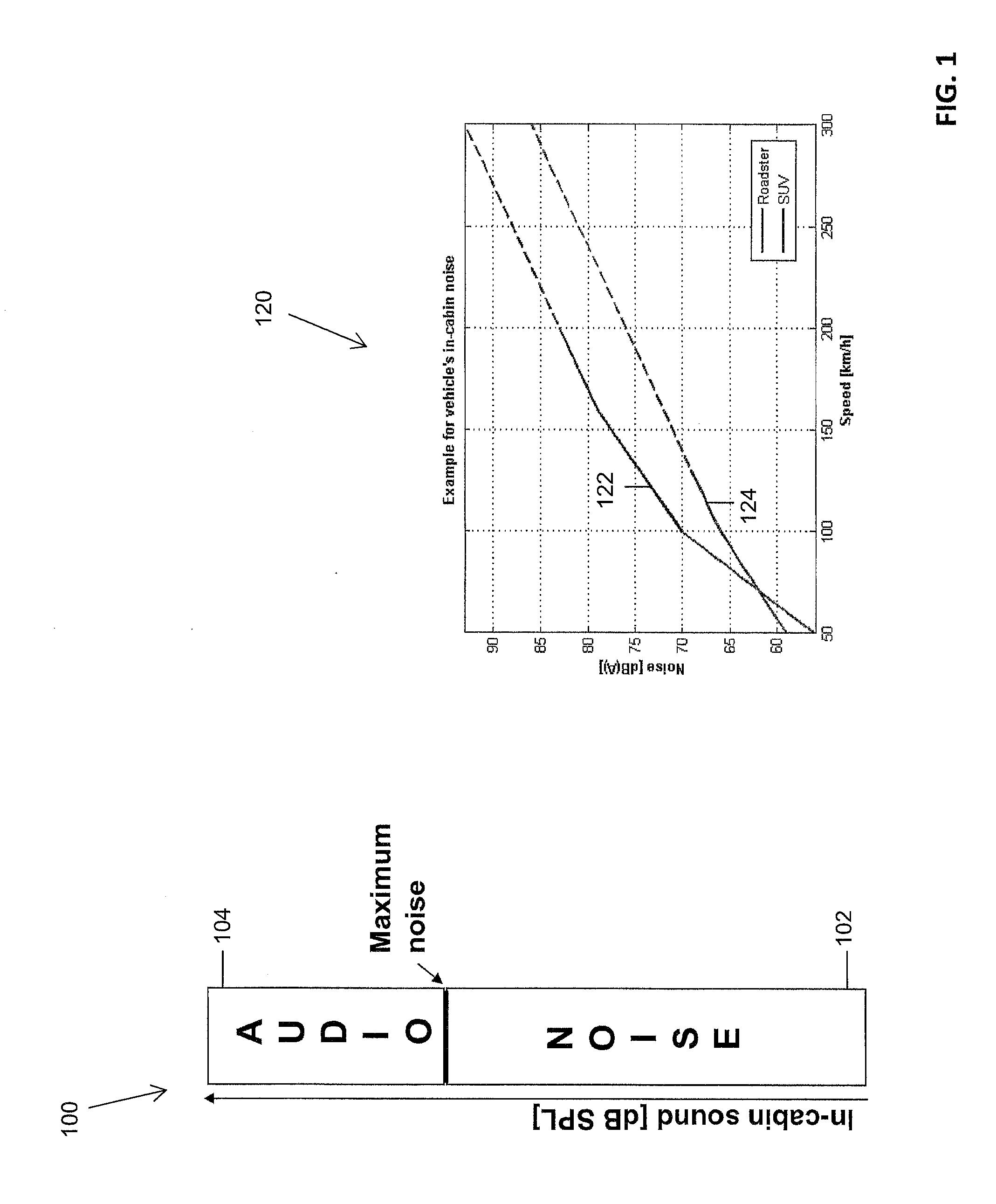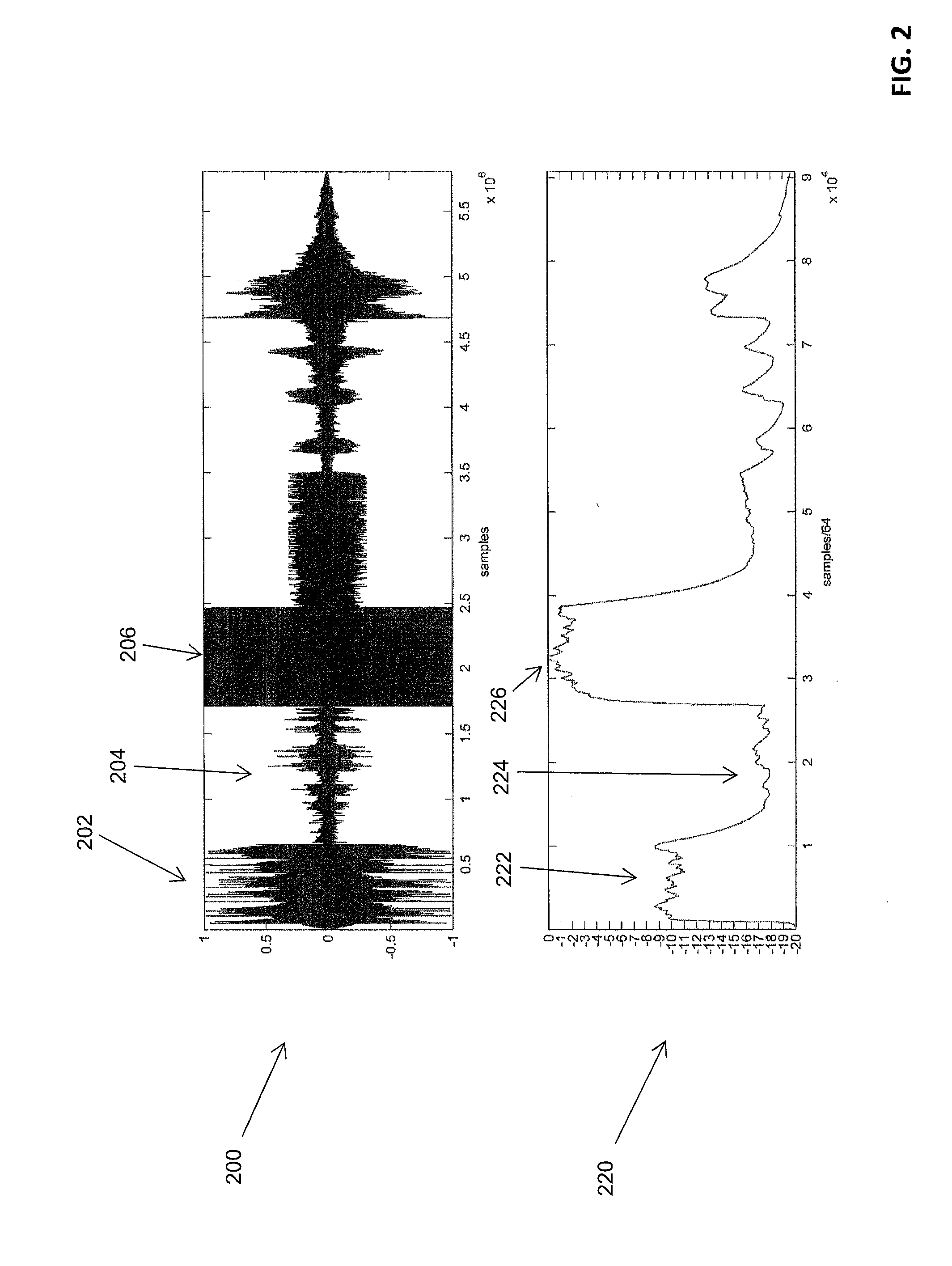Automatic correction of loudness level in audio signals
a technology of automatic correction and loudness level, applied in the field of audio signal processing, can solve problems such as difficult to hear audio signals from different sources
- Summary
- Abstract
- Description
- Claims
- Application Information
AI Technical Summary
Benefits of technology
Problems solved by technology
Method used
Image
Examples
Embodiment Construction
[0021]Occupants of a vehicle may perceive different ambient noises in addition to audio signals that the occupants may wish to perceive. The noise may vary with a variety of factors including the type of vehicle being driven. FIG. 1 is a schematic diagram illustrating the general components of sound 100 in a vehicle and a graph 120 illustrating the effect of vehicle speed on vehicle in-cabin noise. The vehicle sound signal 100 includes noise components 102 and an audio signal component 104. Sound 100 is typically measured in decibels sound pressure level (“dB SPL”). The audio signal component 104 represents sound that the vehicle occupants have an interest in hearing, such as audio from an entertainment system (radio, CD player, MP3 player, and any other suitable entertainment audio source). The noise signal component 102 includes the ambient noise that may interfere with the user's ability to hear the audio signal components 104, such as, for example, road tire noise, aerodynamic n...
PUM
 Login to View More
Login to View More Abstract
Description
Claims
Application Information
 Login to View More
Login to View More - R&D
- Intellectual Property
- Life Sciences
- Materials
- Tech Scout
- Unparalleled Data Quality
- Higher Quality Content
- 60% Fewer Hallucinations
Browse by: Latest US Patents, China's latest patents, Technical Efficacy Thesaurus, Application Domain, Technology Topic, Popular Technical Reports.
© 2025 PatSnap. All rights reserved.Legal|Privacy policy|Modern Slavery Act Transparency Statement|Sitemap|About US| Contact US: help@patsnap.com



